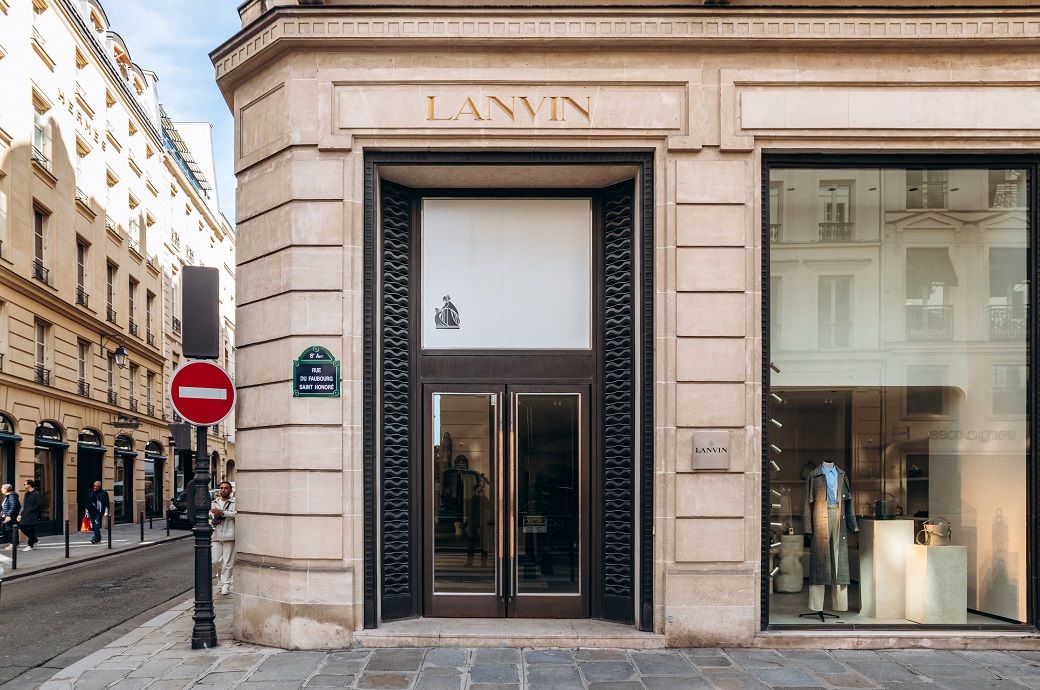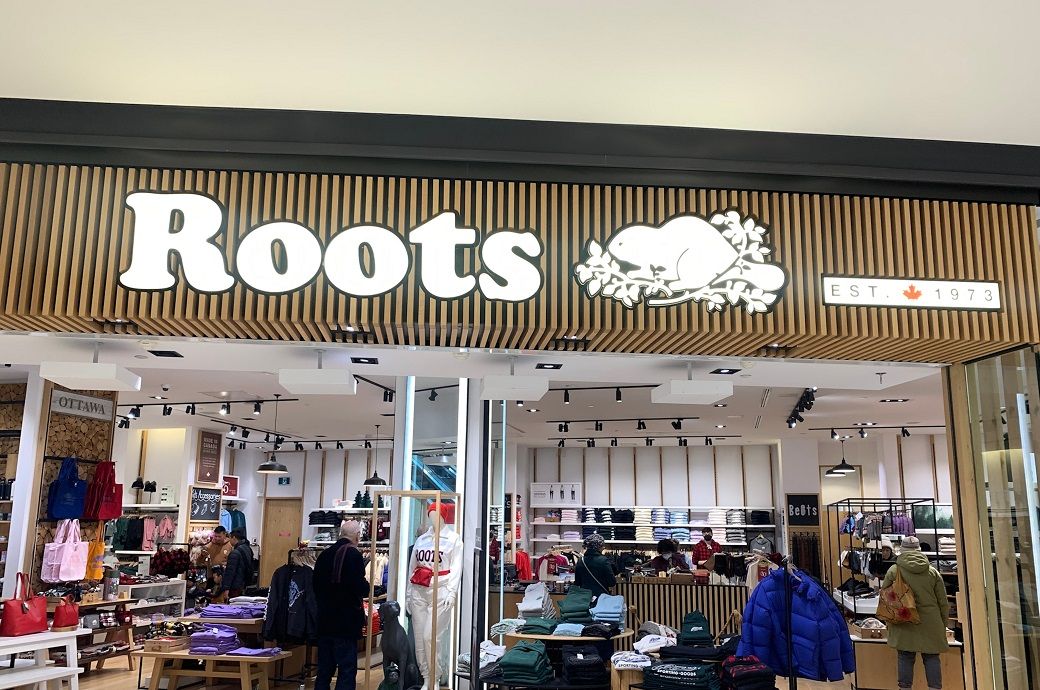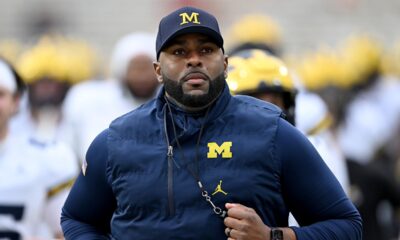Fashion
France’s Lanvin Group H1 2025 revenue down 22%, eyes H2 recovery

French luxury fashion house Lanvin Group has posted revenue of €133 million (~$154.3 million) in the first half (H1) of 2025, ended June 30, marking a 22 per cent decline year-on-year, as luxury markets faced softer demand in EMEA and Greater China. Gross profit stood at €72 million (~$83.5 million) with a 54 per cent margin, supported by disciplined inventory management. Adjusted EBITDA was -€52 million (~-$60.3 million) versus -€42 million in H1 2024, reflecting margin pressure despite cost optimisation.
Lanvin Group’s H1 2025 revenue fell 22 per cent to €133 million (~$154.3 million), with gross profit at €72 million (~$83.5 million).
Lanvin dropped 42 per cent, Wolford 23 per cent, Sergio Rossi 25 per cent, while St John held flat and Caruso slipped 11 per cent.
Cost cuts, retail optimisation, and new creative leadership are set to drive recovery in H2 2025.
Lanvin revenue dropped 42 per cent during a creative transition, with strong retail in EMEA and a rebound in North America e-commerce ahead of Peter Copping’s first collection. Wolford fell 23 per cent, impacted by logistics transitions, though wholesale grew 14 per cent; a 75th anniversary push is planned under deputy CEO Marco Pozzo.
Sergio Rossi’s revenue fell 25 per cent, but Q2 retail rose 17 per cent and e-commerce 10 per cent; Paul Andrew’s debut collection is due in H2. St John remained resilient, with flat revenue, 4 per cent growth in North America, and an 11 per cent wholesale increase, maintaining a 69 per cent margin. Caruso declined 11 per cent, though its proprietary brand continued growth, the company said in a release.
“Despite a challenging luxury market in the first half, we remained disciplined in cost management and strategic streamlining, responsive to market dynamics, and steadfast in our commitment to unlocking the long-term potential of our brands. With new creative leadership and continued investment in product innovation, we are well positioned to capture opportunities as the market environment improves,” said Zhen Huang, chairman of Lanvin Group.
Since H1 2023, G&A expenses have been cut by 35 per cent at St John, 27 per cent at Wolford, and 25 per cent at Sergio Rossi. Retail network optimisation launched in 2024 continues to deliver efficiencies.
St John CEO Andy Lew became executive president of Lanvin Group in January 2025, driving a new European headquarter initiative. Wolford and St John reinforced leadership with senior hires. Peter Copping’s Paris Fashion Week debut and Paul Andrew’s upcoming Sergio Rossi collection are expected to drive brand revitalisation.
The Group expects H2 2025 to remain challenging but sees momentum from new collections, cost efficiencies, retail optimisation, and wholesale partnerships. Strategic investment in product, marketing, and operations aims to strengthen positioning as luxury markets stabilise.
“In the first half, our focus was on operational discipline and laying the foundation for future growth. With fresh creative direction across our houses, supported by targeted marketing and refined channel strategies, we expect to build brand momentum and increase consumer engagement in the second half. We remain agile and execution-focused as we strengthen brand desirability and prepare for recovery,” Andy Lew, executive president of Lanvin Group, said.
Fibre2Fashion News Desk (HU)
Fashion
Canada’s Roots posts 6.8% sales growth in Q3 FY25 on strong DTC demand

The direct-to-consumer (DTC) sales increased 4.8 per cent to $56.8 million, driven by comparable sales growth of 6.3 per cent, reflecting enhancements to the omnichannel customer experience and stronger engagement with curated product assortments.
Canadian outdoor lifestyle brand Roots has reported solid Q3 FY25 results, with sales rising 6.8 per cent to $71.5 million, driven by DTC growth and stronger wholesale demand.
Gross margin improved to 60.8 per cent, while Adjusted EBITDA increased 5.3 per cent to $7.5 million.
Net income stood at $2.3 million, and net debt declined 5.9 per cent, reflecting disciplined execution.
The gross profit of the company increased 8.1 per cent to $43.4 million, while gross margin improved by 80 basis points (bps) to 60.8 per cent. DTC gross margin rose 140 bps to 65.4 per cent, benefiting from improved product costing and lower discounting, which offset unfavourable foreign exchange impacts on US dollar purchases, Roots said in a press release.
Partners & Other (P&O) sales grew 15.3 per cent to $14.6 million, supported by earlier wholesale orders from Roots’ operating partner in Taiwan for upcoming holiday and spring seasons, along with higher domestic wholesale sales of custom Roots-branded products.
Selling, general and administrative (SG&A) expenses increased 10.6 per cent to $38.2 million, largely due to higher variable costs linked to sales growth, strategic investments in marketing and personnel, incremental US duties on e-commerce sales, and higher share-based compensation expenses.
The net income stood at $2.3 million, or $0.06 per share during the period under review, compared with $2.4 million a year earlier. Excluding the impact of revaluation of cash-settled instruments under the share-based compensation plan, net income would have been $2.4 million, representing a 1.5 per cent improvement YoY. Adjusted EBITDA rose 5.3 per cent to $7.5 million, or 7.3 per cent on an adjusted basis excluding revaluation impacts.
“Roots delivered strong third-quarter results, with growth driven by consumers’ positive response to our products, enhanced marketing efforts, and improved in-store execution,” said Meghan Roach, president and chief executive officer (CEO) of Roots Corporation. “Even in a dynamic retail environment, our heritage, quality, and focus on comfort continued to differentiate the brand and drive engagement across our omnichannel platform. We remain disciplined in execution and committed to strengthening the foundations of the brand to support long-term value creation. While early in the fourth quarter, we continue to experience positive trends.”
“Our disciplined approach to investing in strategic growth continues to deliver results,” said Leon Wu, chief financial officer (CFO) at Roots. “We have sustained positive sales momentum and maintained the underlying margins of those sales, supporting a stronger balance sheet with year-over-year reductions in net debt.”
Net debt declined 5.9 per cent YoY to $44.1 million, while the company also repurchased 415,200 common shares for $1.3 million under its normal course issuer bid.
For the first nine months of FY25, total sales increased 6.6 per cent to $162.2 million, with DTC sales rising 8.6 per cent and comparable sales growth reaching 11.5 per cent. The gross margin expanded to 60.9 per cent, while net loss narrowed to $10 million from $11.7 million a year earlier. Adjusted EBITDA improved to a loss of $1.7 million, reflecting continued progress towards profitability.
At the end of Q3 FY25, inventory stood at $66.6 million, reflecting preparations for peak holiday demand and higher in-transit stock. Free cash flow improved to a loss of $4.6 million, while total liquidity amounted to $34.5 million, providing financial flexibility heading into the final quarter.
Fibre2Fashion News Desk (SG)
Fashion
Australia’s NAB expects RBA to raise policy rate by 25 bps in Feb

The economy is already at trend growth, and private final demand is running stronger than the RBA anticipated.
The NAB business survey shows that capacity utilisation is elevated and that there is breadth to this dynamic at an industry level. Businesses reported less pressure on margins over recent months.
The National Australia Bank expects the Reserve Bank of Australia (RBA) to raise the policy rate by 25 bps in February, followed by another likely 25-bps hike in May, taking the cash rate to 4.1 per cent.
The economy is already at trend growth, and private final demand is running stronger than RBA’s anticipation.
Inflation accelerated in Q3 2025, and NAB forecast a 0.9-per cent QoQ for trimmed-mean in Q4.
Inflation accelerated in the third quarter (Q3), and NAB has forecast a 0.9-per cent quarter on quarter (QoQ) for trimmed-mean in Q4, suggesting inflationary pressures have persisted.
If realised, this will imply a period of five quarters in which the annual rate of core inflation runs at 3 per cent or higher. Moreover, it would represent a 15 basis points surprise relative to the RBA’s most recent forecast for the Q4 outcome.
Taken in conjunction with stronger growth outcomes and evidence of capacity constraints starting to bind, the bank believes an inflation outcome of this magnitude will force the RBA to execute a modest recalibration of monetary policy in the first half next year, an NAB release said.
Fibre2Fashion News Desk (DS)
Fashion
Ensuring I-EAEU FTA’s effective implementation a challenge: Indonesia

The agreement is scheduled to be signed during the EAEU Summit in St. Petersburg, Russia, on December 20-21, an EAEU release said.
As Indonesia prepares to welcome the signing of the Indonesia-Eurasian Economic Union Free Trade Agreement, Trade Minister Budi Santoso has said the true challenge is to ensure its effective implementation.
The pact is expected to be signed at the EAEU Summit in St. Petersburg on December 20-21.
Implementation is targeted by late 2026 or early 2027.
The FTA’s initial phase will focus on goods trade.
At the Strategic Forum on International Trade: Indonesia-EAEU FTA in Jakarta, Santoso stressed that without readiness from businesses and strong partnerships, the FTA risks becoming a mere document rather than a driver of trade.
To address this, the Indonesian Ministry of Trade is encouraging the creation of communication platforms and business partnerships between Indonesia and EAEU member states.
Indonesian exports to the bloc reached $1.9 billion in 2024, with total trade valued at $4.5 billion. Over the past five years, bilateral trade has grown at an average annual rate of 21.45 per cent.
The FTA could potentially double total trade, opening access to a vast market of nearly 200 million people, Santoso noted.
The initial phase of the FTA will focus on goods trade, while services, investment and broader cooperation may be included later.
Each EAEU member state is expected to ratify the FTA following the signing. Implementation is targeted by late 2026 or early 2027.
“Over the past three years, the landscape of our foreign trade has been completely renovated. If the EU’s [European Union’s] share of our trade turnover previously exceeded 50 per cent, it now stands at 18 per cent, while the share of BRICS+ countries has increased from 30 per cent to almost 70 per cent,” Andrey Slepnev, Minister in charge of Trade of the Eurasian Economic Commission (EEC), told a recent press conference.
Fibre2Fashion News Desk (DS)
-

 Business6 days ago
Business6 days agoHitting The ‘High Notes’ In Ties: Nepal Set To Lift Ban On Indian Bills Above ₹100
-

 Politics1 week ago
Politics1 week agoTrump launches gold card programme for expedited visas with a $1m price tag
-

 Business1 week ago
Business1 week agoRivian turns to AI, autonomy to woo investors as EV sales stall
-

 Fashion1 week ago
Fashion1 week agoTommy Hilfiger appoints Sergio Pérez as global menswear ambassador
-

 Sports1 week ago
Sports1 week agoPolice detain Michigan head football coach Sherrone Moore after firing, salacious details emerge: report
-

 Business1 week ago
Business1 week agoCoca-Cola taps COO Henrique Braun to replace James Quincey as CEO in 2026
-

 Sports1 week ago
Sports1 week agoU.S. House passes bill to combat stadium drones
-

 Tech1 week ago
Tech1 week agoGoogle DeepMind partners with UK government to deliver AI | Computer Weekly


















